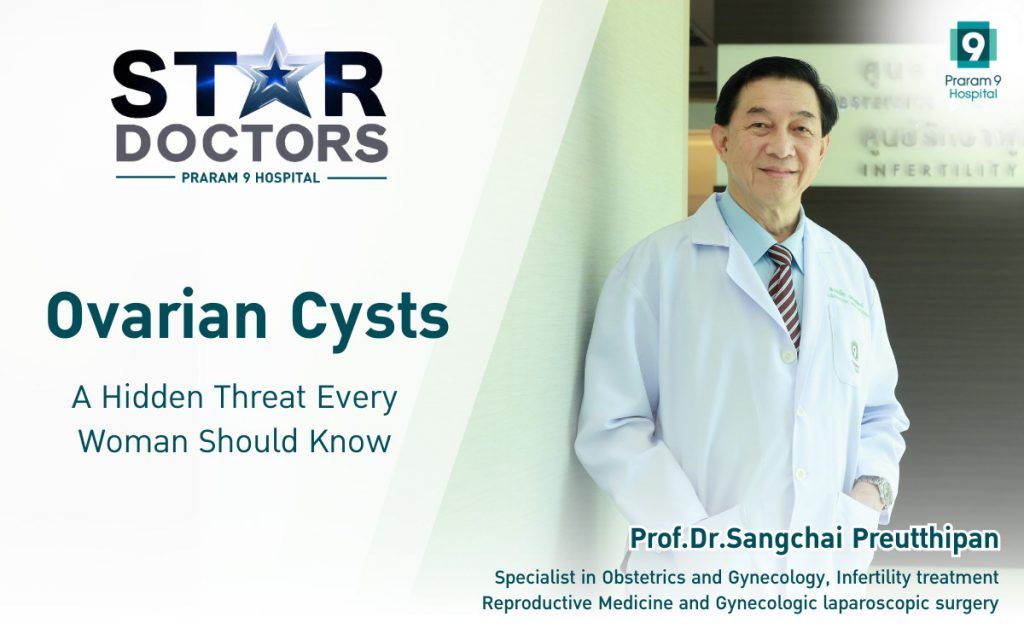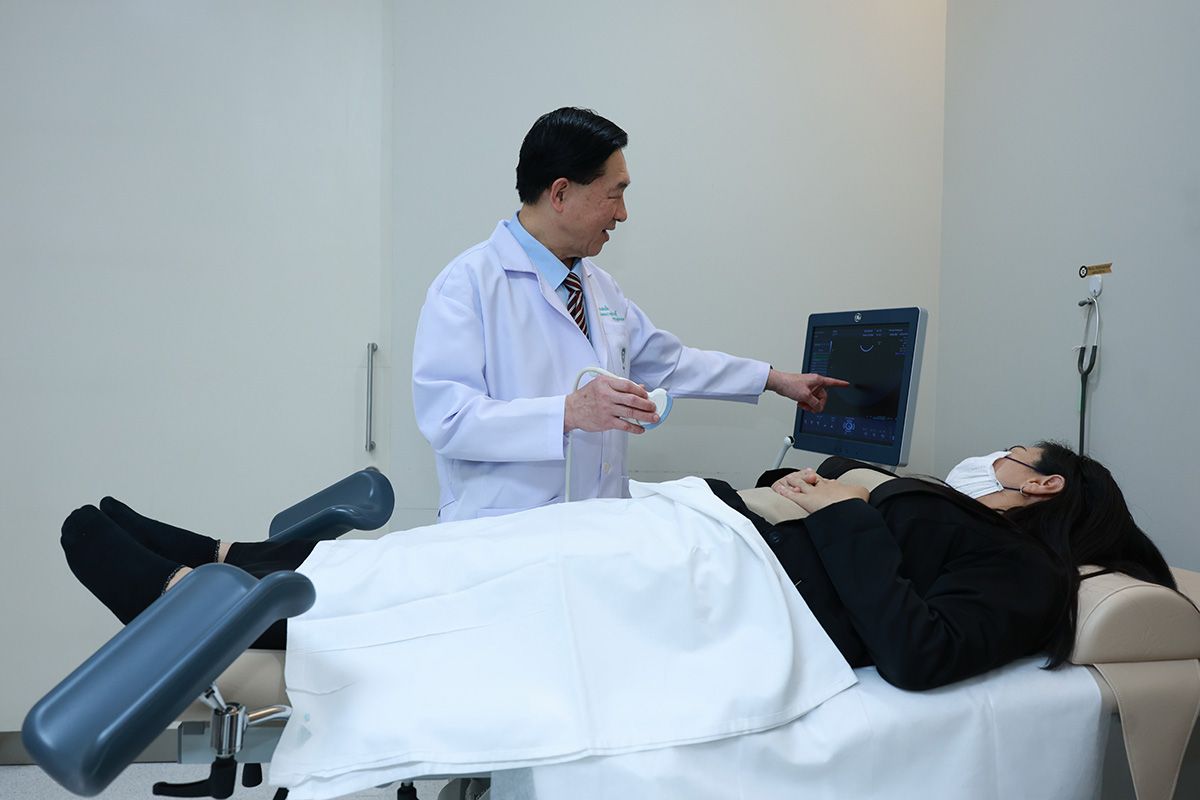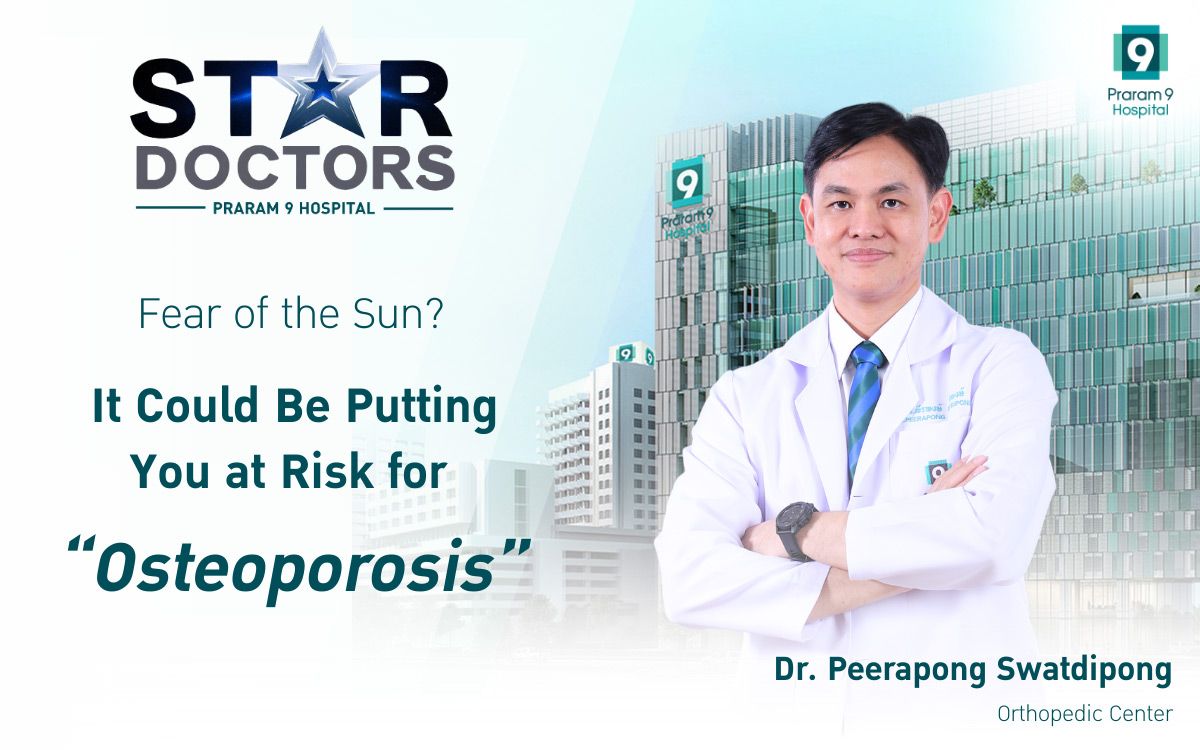Health Articles
Knowledge
Ovarian Cysts: A Hidden Threat Every Woman Should Know

These days, who would have thought that “ovarian cysts” would become a silent danger women need to be aware of? What’s even more concerning is that ovarian cysts often present no clear warning signs. Many women may be unaware that they have an ovarian cyst until they experience severe symptoms such as intense menstrual cramps, irregular periods, abdominal bloating, noticeable lumps in the pelvic area, or severe pain during intercourse. If left untreated, this condition can potentially be life-threatening.
Unveiling the Secrets of Ovarian Cysts with a Specialist
Professor Emeritus Dr. Sangchai Preutthipan, a specialist in reproductive medicine and laparoscopic surgery from Praram 9 Hospital, explains that the “ovaries” are small, thumb-sized organs responsible for producing eggs each month. With each ovulation, a fluid-filled sac forms around the egg. Sometimes, these sacs don’t dissolve as they should, leading to cyst formation. There are several types of ovarian cysts, including those caused by ovarian dysfunction, tumor-related cysts, endometriosis cysts (also known as chocolate cysts), cysts resembling other body tissues, and even cancerous cysts.
Dr. Sangchai further notes that women of reproductive age up until menopause are at risk for ovarian cysts. Around 30-35% of women develop cysts due to ovarian dysfunction, while 20% develop tumor-related or chocolate cysts. Approximately 15% may have cysts that resemble other tissue types, and 1-5% are diagnosed with cancerous cysts. Each type of cyst carries different health risks.
The Hidden Causes of Ovarian Cysts

One of the most concerning aspects of ovarian cysts is that they often remain symptomless until they have grown significantly, typically reaching 5 centimeters or more in size. At this point, symptoms such as pelvic pain, a feeling of heaviness, or frequent urination (due to pressure on the bladder) may occur. If left untreated, cysts may twist or rupture, leading to severe abdominal pain or internal bleeding, which could be life-threatening.
Moreover, if you’re struggling with infertility, ovarian cysts—especially chocolate cysts—could be a key factor. These cysts can damage healthy ovarian tissue, reducing egg quality and lead to ovulatory dysfunction.
Treatment and Prevention of Ovarian Cysts

Dr. Sangchai emphasizes the importance of consulting a doctor if you suspect an ovarian cyst. Diagnosis may involve an abdominal or transvaginal ultrasound, depending on the case. If a cyst is detected, your doctor will evaluate its type. For non-dangerous cysts, regular monitoring every 3-6 months may be advised. However, if the cyst poses a health risk, surgery may be necessary.

Don’t wait for ovarian cysts to become a major problem. Regular health check-ups and consultations with your doctor are essential. Women should never overlook their health, as early detection and treatment are crucial to preventing serious complications.
About the Author







